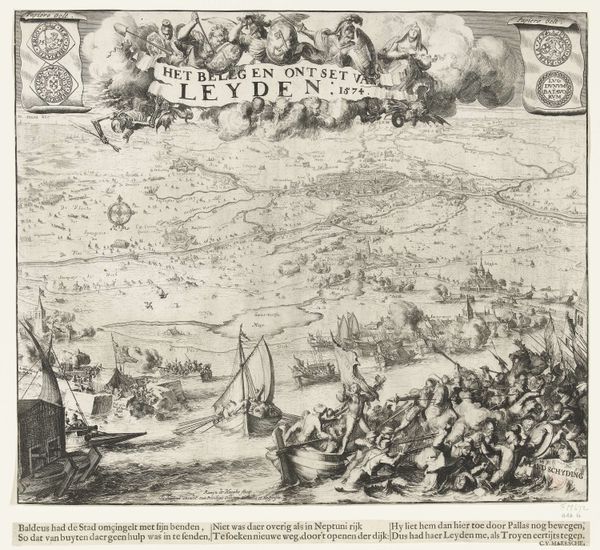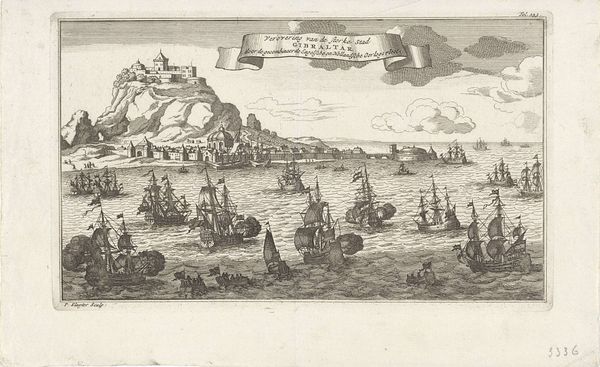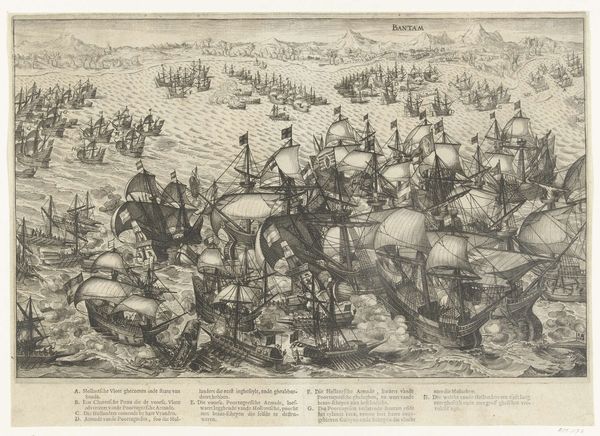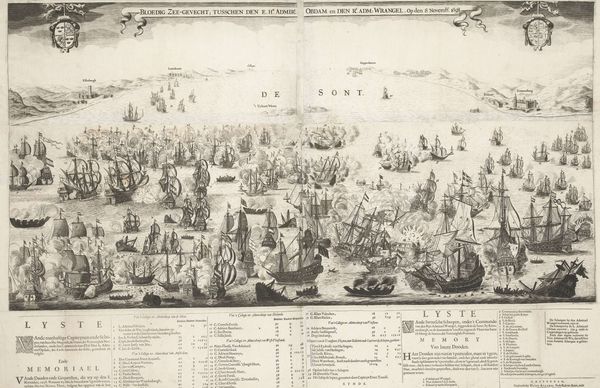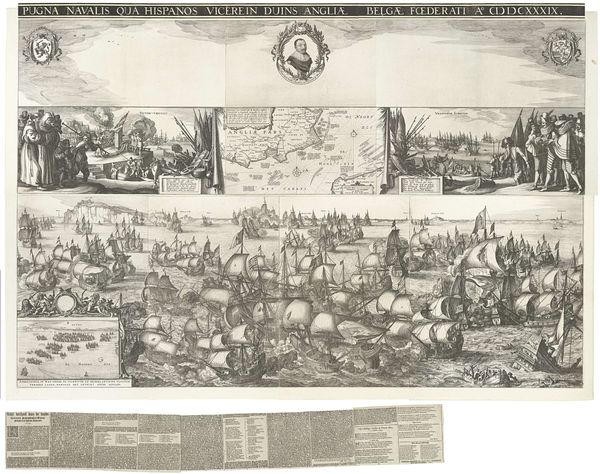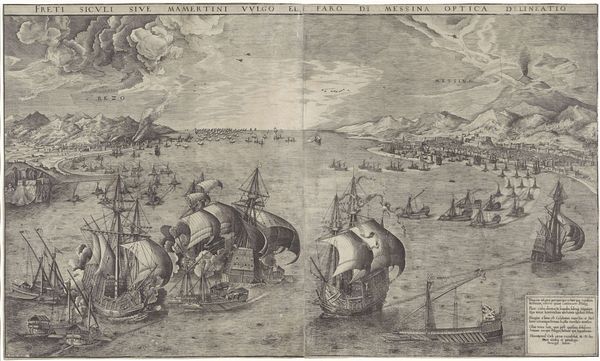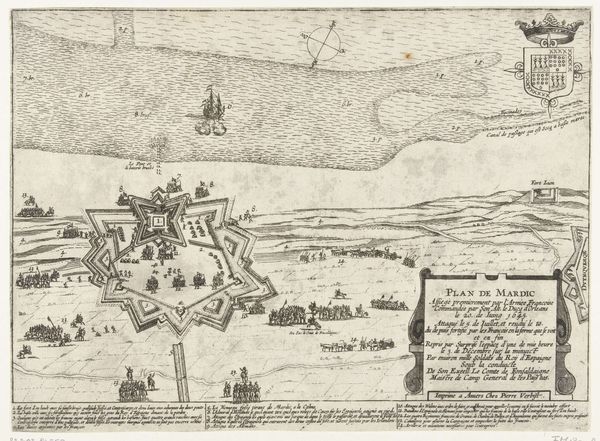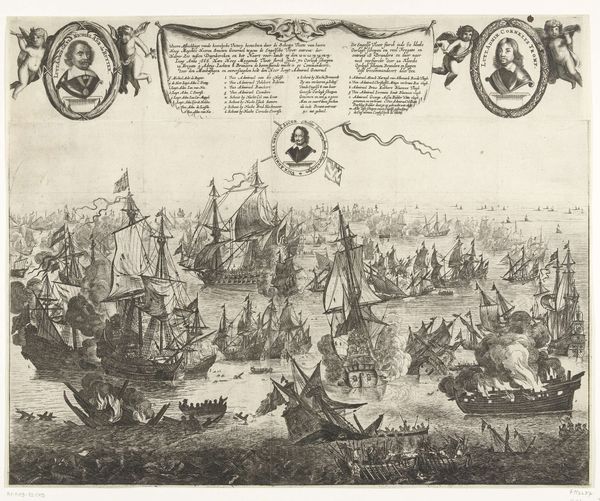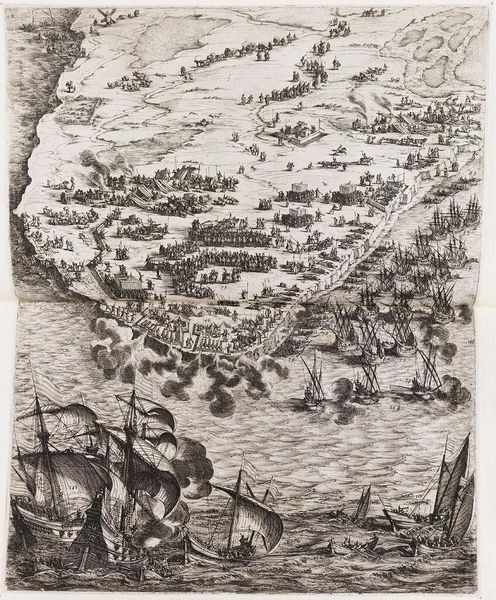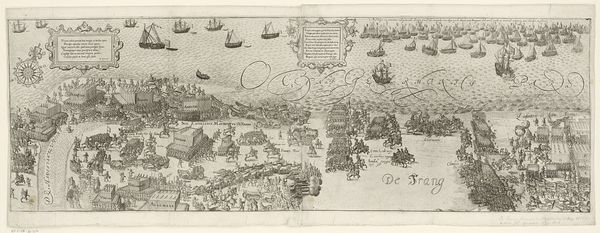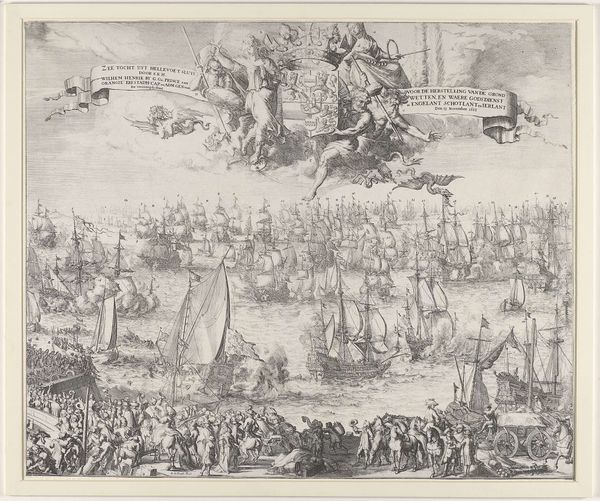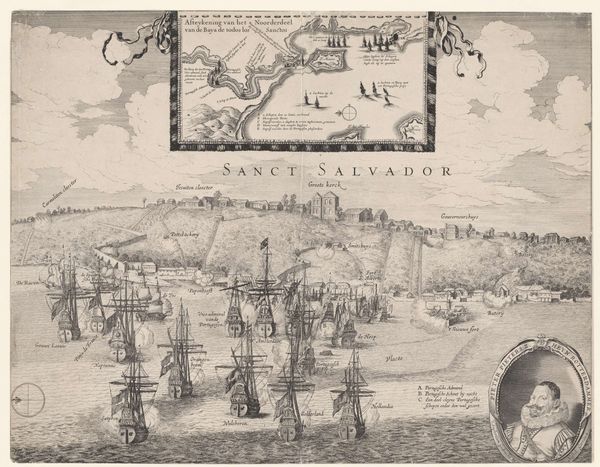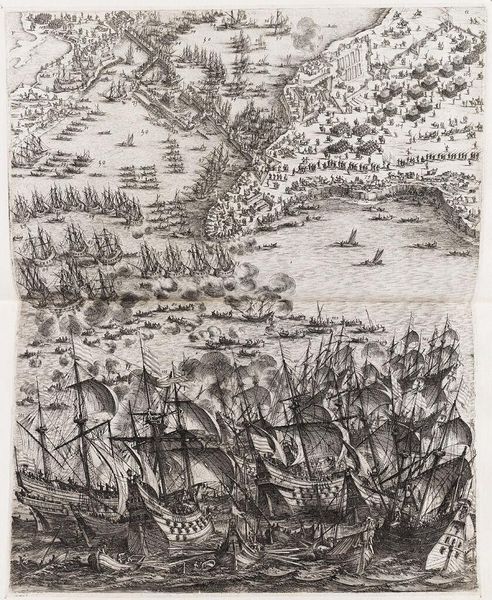
print, engraving
#
baroque
#
pen drawing
#
dutch-golden-age
# print
#
landscape
#
history-painting
#
engraving
Dimensions: height 595 mm, width 765 mm
Copyright: Rijks Museum: Open Domain
Editor: Here we have an engraving titled "Zeeslag bij Duins, 1639", placing the work historically in that year, but the artist unfortunately is Anonymous. It’s incredibly detailed, almost overwhelming with all the ships depicted. How do you even begin to approach a piece like this? Curator: One starts, as always, with line and form. Observe the stark contrast created by the engraving technique. Note how the artist uses dense cross-hatching to suggest depth and volume, particularly in the rendering of the ships and the agitated sea. Editor: The level of detail is remarkable, but it's also quite flat in areas. It doesn't feel entirely realistic. Curator: Precisely! This tension between detail and flatness is key. The work isn't striving for photorealism but rather aims for a symbolic representation. Consider the composition: the arrangement of ships creates a dynamic, almost chaotic rhythm across the picture plane, guiding the eye from left to right, suggesting the unfolding of the battle itself. How does the density of the ships create a sense of spatial compression, defying traditional perspective? Editor: So, it’s not about accurate representation, but about the feeling or structure of the battle? What about the winged figure at the top, what could that signify in terms of form or meaning? Curator: Yes, analyze the aerial perspective contrasting with the almost map-like depiction of the coastline. This contrast emphasizes the vastness of the scene while maintaining a degree of formal control. The winged figure functions as a visual annotation. Observe its placement in the composition: it directs the viewer’s attention towards the imagined spatial field. Editor: It's amazing how much information is conveyed just through line and composition. Thanks for helping me to read the image differently. Curator: Indeed. By focusing on these formal elements, we can begin to understand how the artwork functions as a carefully constructed representation, even without knowing the artist's name. It shows how crucial the basic principles of artmaking are.
Comments
No comments
Be the first to comment and join the conversation on the ultimate creative platform.
